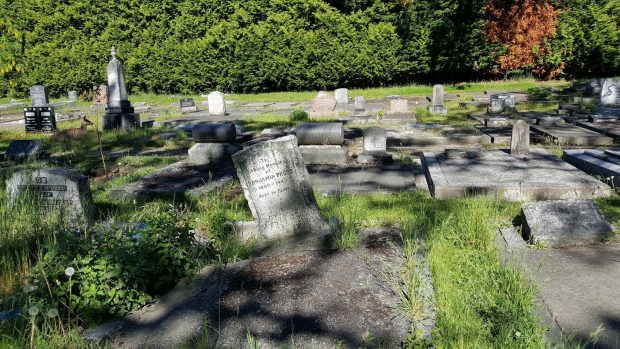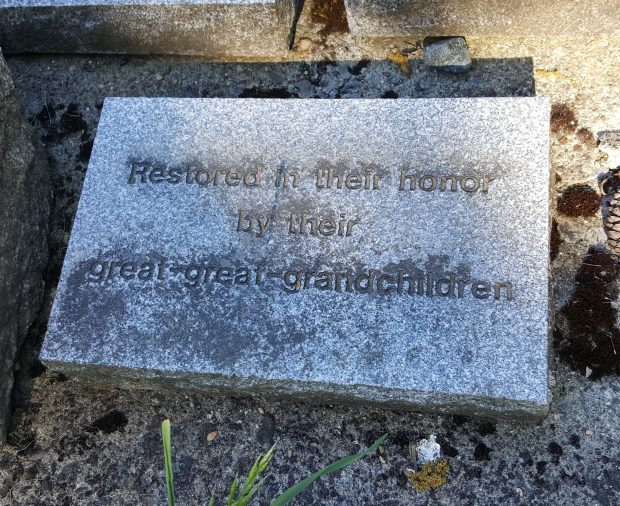 Figure 1. Overview of falling monuments in need of preservation and conservation. Specifically focusing on plot G22 in the Jewish Cemetery. Photography by Torah Lee.
Figure 1. Overview of falling monuments in need of preservation and conservation. Specifically focusing on plot G22 in the Jewish Cemetery. Photography by Torah Lee.
What is gravestone preservation? Is it important? Why do we need it and who is doing it? These are all important questions that we need to ask ourselves when researching a cemetery. While stone seems to last forever, it is still a malleable material and can break. When this happens to a monument, it can be pretty upsetting for the family members that still come to visit their deceased loved ones. If you went to your family member’s grave and their monument had fallen over, how do you think you would feel? It wouldn’t be the most joyous occasion. In the Jewish cemetery, there are many restored monuments that have been laid down for conservation, long after the fact. For example, in figure 2, one family plot in particular, made of marble headstones with lead lettering, was restored by the deceased’s great, great grandchildren, whom had laid the decaying stones in a granite base in order to preserve them.


Figure 2. Example of the family plot, in F25-28, with marble monuments and lead lettering, that has had conservation. Including plaque stating who restored the monuments. Photography by Katie M and Torah Lee
Even for non-family members, gravestones are important because they can also be physical markers of history and some of the stone-work even acts as pieces of art as well. Thus, losing the monument should be nothing that you turn your eye to. Another example of this, would be one of the monuments in the Jewish cemetery, represented by figure 3, that was created by an artist, as it has an intricate floral and lace design carved into the back-side.
 Figure 3. Example of an artist’s gravestone art, Plot H19. Photography by Torah Lee
Figure 3. Example of an artist’s gravestone art, Plot H19. Photography by Torah Lee
The website above, ties into the theme as it is a blog about cemeteries and the preservation of the gravestones. The creator of the website began his career installing new gravestones, but then later pursued the preservation of older ones. He created the website in order to share his knowledge and educate the public through blog posts, hands-on training and workshops that you are able to book through his website. He explains that the basis of the website was meant to be a “continual work in progress,” as he understands that this particular profession is ever changing and that there are many subdivisions that may pop up when one topic is discussed. It seems that he also understands that masonry, as a trade, has declined as well. He speaks of how people should have the mindset of an “open exchange of ideas [so] that we can further the cause of preserving all of America’s historic graveyards”.
In our opinion, this seems to directly relate to our own research project as we are surveying the Jewish cemetery in order to report any instances of repair and or maintenance that may be needed in order to conserve the monuments. Regular reports help to keep the caretakers and the congregation of Emanu-El informed and keep the area looking its best. In conclusion, masonry conservation definitely has its important, even though on the decline, and should be studied just as much as other fields when researching cemeteries. The preservation of the past helps both those who care for the graves in the present and help to shape our understanding of future monuments.